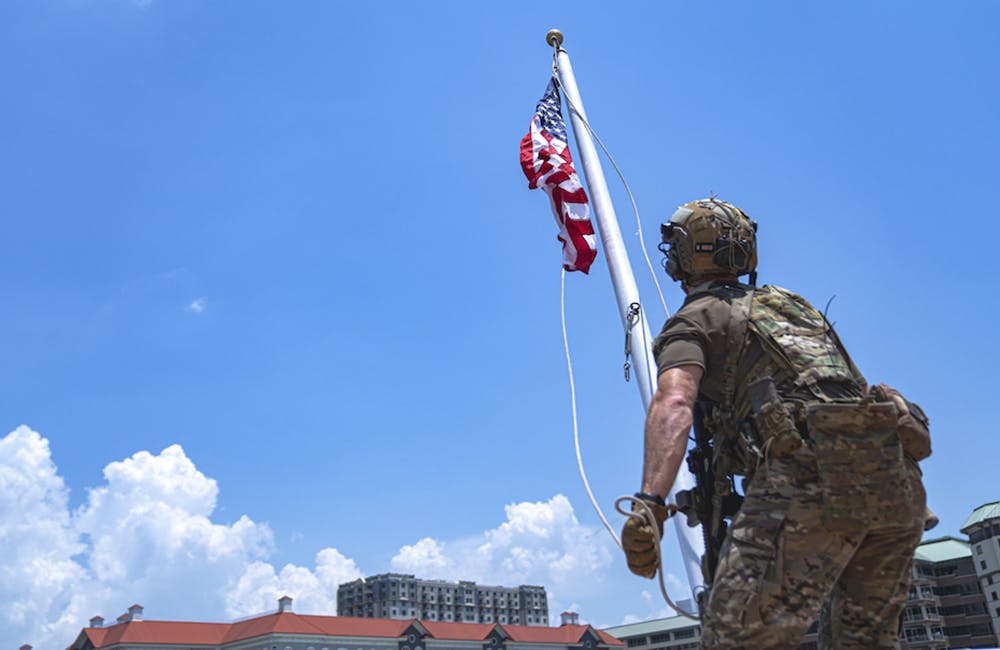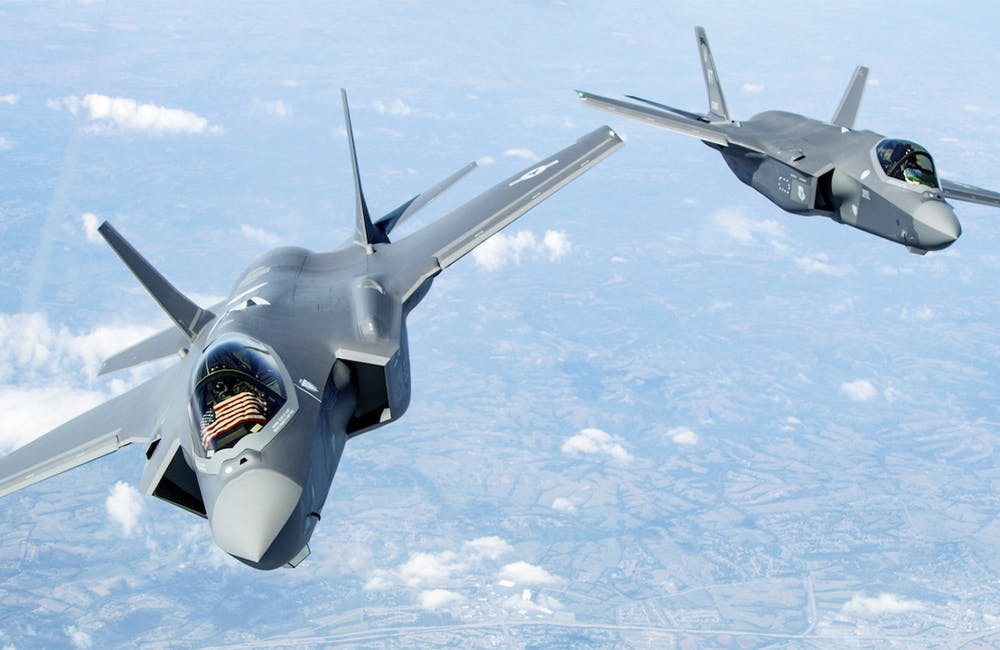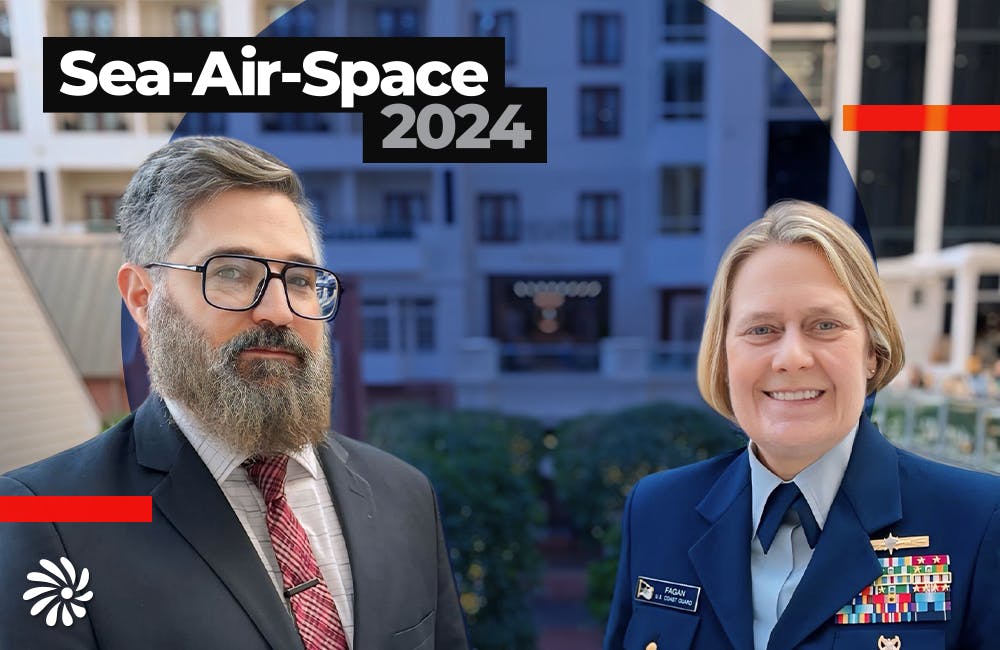How Industry Can Help SOCOM’s Tech Challenges
The command is calling on partners to help connect data, build cloud infrastructure and modernize security solutions.

U.S. Special Operations Command (SOCOM) wants industry’s help with major technical challenges around data management, cloud infrastructure and strengthened information security. This opportunity for industry partnerships, top brass said, is what ensures that the global defense force maintains its edge over adversaries.
“I really think our decisive advantage in competition is you, is industry,” U.S. Navy Rear Adm. Keith Davids, commander of Special Operations Command (SOC) South, told attendees of the Special Operations Forces Industry Conference (SOFIC) in Tampa, Florida Wednesday. “I think the innovation, the creativity, the energy that our free market system and this group of people bring — that’s where we’re going to win.”
Davids was one of five leaders of SOCOM’s Theater Special Operations Commands (TSOC) who discussed the context of each command’s missions within global theater and what they mean for the future of their technical needs.
SOC Africa, for example, is positioned in austere territory in parts of West and East Africa “surrounded by the enemy,” including the Somalia-based terrorist group Al-Shabaab, said U.S. Navy Rear Adm. Milton Sands, commander of SOC Africa, at SOFIC. “It’s where virtue is the perfect SOC operating environment. … With our partners, how do we communicate, how do we help assist partner elements forward, what technology can we give them that informs their understanding of the path, and what technology can we use to inform our own understanding of the ending?”
Other than obvious geographical challenges in connecting the joint forces with necessary data like positioning and imaging information, there are challenges inherent within adversaries that make the technological battlefield often unpredictable.
“The adversary is leveraging the state of the market to be able to bring lethal capability against us in a way that there is very low barrier [to entry],” said U.S. Navy Rear Adm. Frank Mitchell Bradley, commander of SOC Central. “How do we counter those threats that are ubiquitously available to our adversaries? How do we prepare ourselves to understand where they’re coming from? … How do you understand where the needle of lethal aid is in the haystack of illicit smuggling?”
Bradley described how taking technology and equipping the human to better understand the problem and better defend is key to SOCOM’s collaborative approach with industry partners.
“None of the technology or the technical capabilities we have are all really useful to us if they’re not used through a partnership,” he said.
But in today’s age in the ever-present information domain, handling massive amounts of valuable data is both a challenge and an opportunity. An opportunity because it can ensure understanding of threats and courses of action, such as the large-scale evacuation of Americans from Kabul, Afghanistan last year, he added. But a challenge because of the workforce.
“The reality is we don’t have the depth of personnel to troll through, but we should be doing predictive analysis, running models every day on everything from where narcos are moving during holidays,” Davids said. “There is where we need help — data structuring.”
“Help us in denying the competitive space through development of various solutions: cloud technology, AI-enabled domain-awareness platforms, [unmanned aerial systems (UAS)], counter-UAS … interoperable situational awareness tools, mission command and [command and control] C2 infrastructure. These are clearly gaps for us in the [U.S. Northern Command] space in terms of interoperability,” said Army Col. Keith Pritchard, deputy commander, of SOC North.
This is a carousel with manually rotating slides. Use Next and Previous buttons to navigate or jump to a slide with the slide dots
-

Strategies for Effective Data Modernization
Data is the lifeblood of critical decisions and streamlines operations across the government, but many agencies struggle with inconsistent standards.
33m watch -

CDC Updates Public Health Data Strategy
Accelerating data sharing through capabilities like electronic case reporting make up a large portion of the new two-year plan.
3m read -

Joint Navy-Air Force Simulator Expanding Digital Fighter Jet Training
A joint facility with the services wants to replicate its F-35 digital simulator technology across the Defense Department.
5m read -

Sea-Air-Space: Coast Guard Prioritizes Agility in the Face of Technological Change
Adm. Linda Fagan says the modern Coast Guard is to adjusting to the speed of technology.
10m watch








